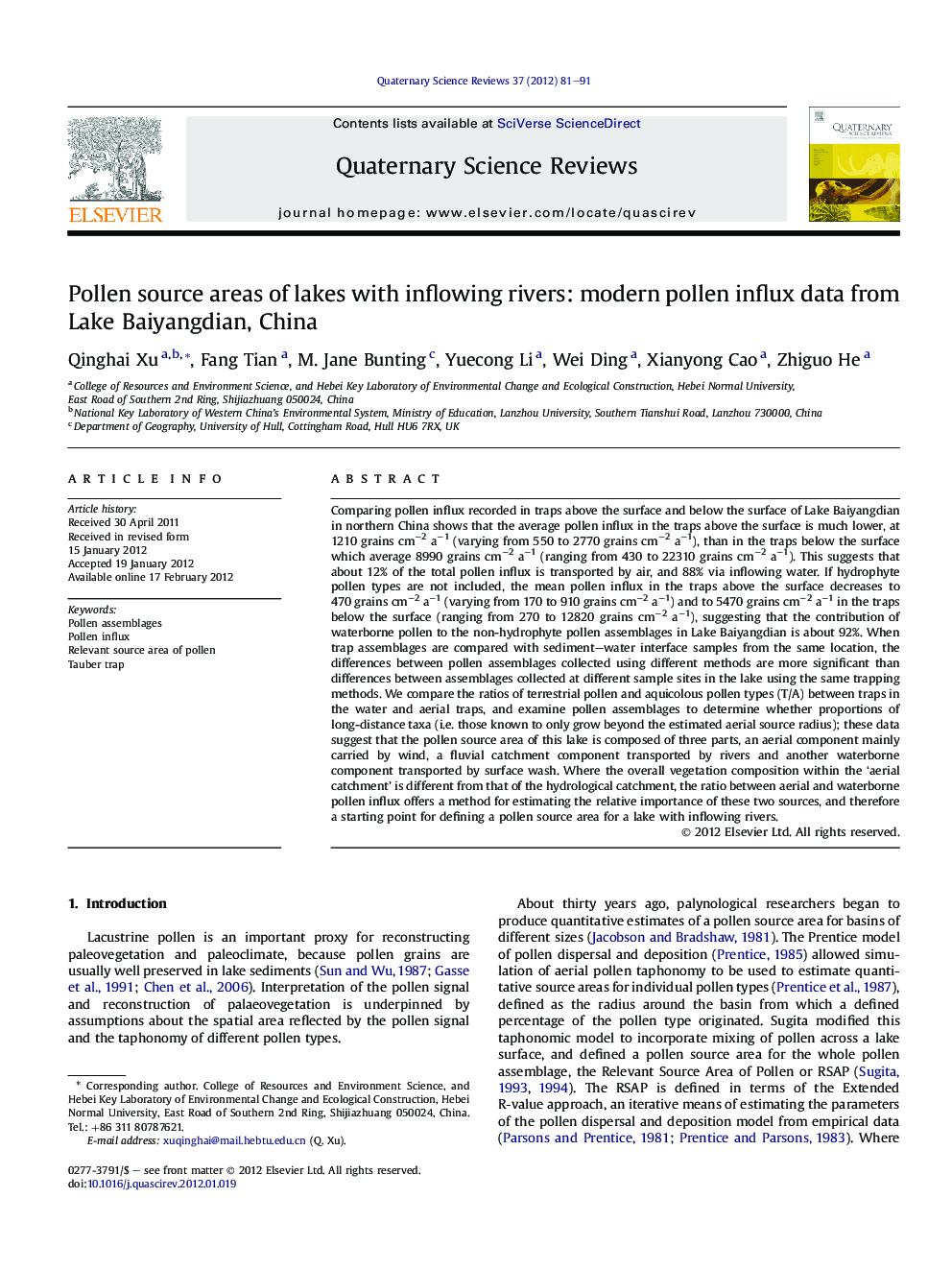| کد مقاله | کد نشریه | سال انتشار | مقاله انگلیسی | نسخه تمام متن |
|---|---|---|---|---|
| 4737411 | 1640897 | 2012 | 11 صفحه PDF | دانلود رایگان |

Comparing pollen influx recorded in traps above the surface and below the surface of Lake Baiyangdian in northern China shows that the average pollen influx in the traps above the surface is much lower, at 1210 grains cm−2 a−1 (varying from 550 to 2770 grains cm−2 a−1), than in the traps below the surface which average 8990 grains cm−2 a−1 (ranging from 430 to 22310 grains cm−2 a−1). This suggests that about 12% of the total pollen influx is transported by air, and 88% via inflowing water. If hydrophyte pollen types are not included, the mean pollen influx in the traps above the surface decreases to 470 grains cm−2 a−1 (varying from 170 to 910 grains cm−2 a−1) and to 5470 grains cm−2 a−1 in the traps below the surface (ranging from 270 to 12820 grains cm−2 a−1), suggesting that the contribution of waterborne pollen to the non-hydrophyte pollen assemblages in Lake Baiyangdian is about 92%. When trap assemblages are compared with sediment–water interface samples from the same location, the differences between pollen assemblages collected using different methods are more significant than differences between assemblages collected at different sample sites in the lake using the same trapping methods. We compare the ratios of terrestrial pollen and aquicolous pollen types (T/A) between traps in the water and aerial traps, and examine pollen assemblages to determine whether proportions of long-distance taxa (i.e. those known to only grow beyond the estimated aerial source radius); these data suggest that the pollen source area of this lake is composed of three parts, an aerial component mainly carried by wind, a fluvial catchment component transported by rivers and another waterborne component transported by surface wash. Where the overall vegetation composition within the ‘aerial catchment’ is different from that of the hydrological catchment, the ratio between aerial and waterborne pollen influx offers a method for estimating the relative importance of these two sources, and therefore a starting point for defining a pollen source area for a lake with inflowing rivers.
► Pollen influxes of aerial and waterborne traps in Lake Baiyangdian, northern China.
► Quantificational contributions of different pollen transport agents.
► Pollen source area of lake with inflows includes entire fluvial catchments.
Journal: Quaternary Science Reviews - Volume 37, 22 March 2012, Pages 81–91